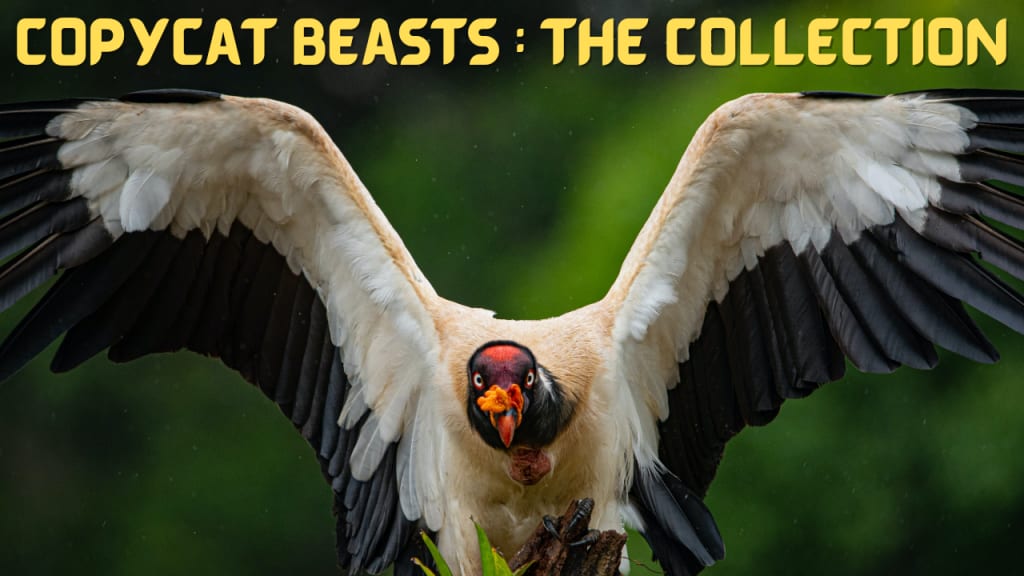Animal Mimicry: The Evolutionary Arms Race
"Exploring the Fascinating World of Animal Mimicry: Types, Significance, and Practical Applications"

In the animal kingdom, survival is the ultimate goal. Animals have evolved a variety of physical, behavioral, and physiological adaptations to survive in their respective environments. One such adaptation is mimicry, where animals mimic the appearance, behavior, or sounds of other species to gain an advantage over their competitors. Animal mimicry is an evolutionary arms race, where predators and prey continually evolve new strategies to outsmart each other.
Types of Animal Mimicry
There are several types of animal mimicry, each serving a different purpose. The two main types of animal mimicry are Batesian and Mullerian mimicry
Batesian mimicry
Batesian mimicry is a type of mimicry where a harmless or edible species mimics the appearance of a dangerous or unpalatable species to avoid being eaten by predators. The mimicry works because the predators mistake the mimic for the dangerous species and avoid it. The mimic benefits from this because it can go about its business without fear of being eaten.
One of the most famous examples of Batesian mimicry is the Viceroy butterfly. The Viceroy butterfly looks very similar to the Monarch butterfly, which is toxic to predators. The Viceroy is not poisonous, but predators avoid it because they mistake it for the Monarch. Another example is the harmless scarlet king snake, which mimics the venomous coral snake's red, black, and yellow bands.
Mullerian Mimicry
Mullerian mimicry is a type of mimicry where two or more harmful or unpalatable species evolve to share a similar appearance. The mimicry works because the predators learn to associate the warning signals with the unpleasant experience of eating the harmful species. The mimics benefit from this because predators avoid them as well.
A classic example of Mullerian mimicry is the group of stinging insects, including bees and wasps, that share a yellow and black color pattern. This color pattern serves as a warning signal to predators that they are armed with a painful sting. The species have evolved to share a similar appearance, reinforcing the warning signals to predators.
Reasons for Animal Mimicry
Animal mimicry has evolved for several reasons, including defense, predation, and mating.
Defense
Animal mimicry is commonly used as a defense mechanism to avoid being eaten by predators. The mimicking species is protected by the warning signals of the species it mimics. This type of mimicry is known as Batesian mimicry.
For example, the harmless milk snake mimics the venomous coral snake's coloration to avoid being eaten by predators. Predators learn to avoid the milk snake because they mistake it for the dangerous coral snake.
Predation
Animal mimicry can also be used as an offensive strategy for predators. Predators can mimic the appearance, behavior, or sounds of their prey to lure them into a trap. This type of mimicry is known as aggressive mimicry.
One example of aggressive mimicry is the alligator snapping turtle. The turtle attracts fish by wiggling its tongue like a worm. When the fish approach, the turtle snaps its jaws shut, capturing its prey.
Mating
Animal mimicry can also play a role in mating. Some species use mimicry to attract potential mates or to avoid being rejected. This type of mimicry is known as sexual mimicry.
For example, the male Australian peacock spider has a colorful abdomen and dances to attract female spiders. The male spider also mimics the movements of a fly to lure female spiders into mating.
Significance of Animal Mimicry
Animal mimicry has significant implications for the evolution of species. Mimicry is a type of coevolution, where two or more species evolve in response to each other. Coevolution can lead to the development of new traits and adaptations in both species, creating a complex web of interactions in the ecosystem.
One example of coevolution is the relationship between the Monarch butterfly and the milkweed plant. The Monarch butterfly lays its eggs on the milkweed plant, and the caterpillars feed on the plant's leaves. The caterpillars store the milkweed's toxins, which make them poisonous to predators. The Monarch butterfly's bright colors serve as a warning signal to predators that they are toxic. The milkweed plant has also evolved to produce more toxins in response to the Monarch's feeding, creating a cycle of coevolution.
Another example of coevolution is the relationship between predators and their prey. As predators evolve new strategies to catch their prey, the prey also evolves new adaptations to avoid being eaten. Mimicry is one such adaptation that allows prey to avoid being eaten by predators.
The Importance of Studying Animal Mimicry
The study of animal mimicry is crucial for understanding the complex interactions between species in an ecosystem. It allows us to understand how species adapt and evolve in response to each other, and how these interactions shape the evolution of new traits and adaptations.
The study of animal mimicry also has practical applications in fields such as conservation biology, agriculture, and medicine. Understanding how species interact and evolve can help us develop strategies to protect endangered species, control pests in agriculture, and discover new medicines.
Conclusion
Animal mimicry is a fascinating adaptation that allows animals to survive in their respective environments. Mimicry is a type of coevolution, where two or more species evolve in response to each other. Batesian and Mullerian mimicry are the two main types of mimicry, with each serving a different purpose.
The study of animal mimicry is crucial for understanding the complex interactions between species in an ecosystem. It allows us to understand how species adapt and evolve in response to each other and how these interactions shape the evolution of new traits and adaptations. By studying animal mimicry, we can gain insights into the evolution of species and develop strategies to protect endangered species, control pests in agriculture, and discover new medicines.
About the Creator
Kimberley Stewart
"Words are my canvas and storytelling is my art. With a passion for the written word and 5 years of experience, I craft captivating stories that leave a lasting impression.






Comments
There are no comments for this story
Be the first to respond and start the conversation.